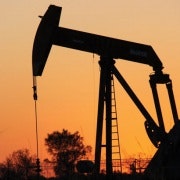Learning from the shale gas guinea pig
The shale gas boom in the United States is turning global energy markets on their heads. But arguably no two countries will be affected more by this than Australia and Canada.
The similarities are clear and well-established: economies dominated by energy exports, focused on LNG growth and with close economic and diplomatic relationships with the US.
But Canada has one factor that Australia lacks: proximity. And that factor alone makes Canada the canary in the coal mine that will give Australia a chance to witness the US shale gas boom's effects before its full impact washes up on Australian shores.
To say that Canada has put its eggs in one basket would be an understatement. Fully 98 per cent of Canada's oil exports and 100 per cent of its natural gas exports go to the United States. So when the world speculates about the impact the US shale gas boom will have on global energy markets, Canada's energy sector will feel it first and feel it the hardest.
The warning signs are loud and clear. A recent report by TD Economics examined the impact of the US shale gas boom on Canada and urged Canada's government and energy sector to rapidly develop new domestic and foreign markets in response to what it called the "US shale gas revolution”.
A separate report by the Conference Board of Canada predicts that the next decade will be a challenging one for Canada's natural gas sector due to depressed prices, a continuing plunge in exports to the US and reduced production.
Net natural gas exports to the US are forecast to contract by 30 billion cubic metres over the next decade, less than one-third of what Canada exported to the US as recently as 2007.
So what can Canada do that might help guide Australia through the rocky decade to come?
Canada is still fumbling its way towards an answer. But the growing realisation of the extent to which US shale gas is a game-changer has sparked a debate about developing new markets in Asia versus developing domestic markets, similar to the debate seen in Australia.
The trouble with the first solution – Asia – is that Canada's Pacific coast lacks infrastructure, the pipelines and coastal terminals, to facilitate that option. Plans are in place to build infrastructure to allow 20 million tonnes of annual LNG export capacity, but the infrastructure won't begin to come on-stream for years, and political and environmental opposition could delay even that timeline.
In addition, the Canadian government's recent handling of China's CNOOC Ltd's bid for Canadian energy giant Nexen Inc – where it accepted the deal but said in the future takeover offers from state-owned enterprises would be approved only in exceptional circumstances – illustrated two key issues that will likely force Canada, and perhaps Australia, to increasingly look inward, at least initially, for developing energy markets. Chinese officials expressed their clear frustration at Canada's unwillingness to openly embrace Chinese foreign investment in the energy sector. At the same time, Canada is stuck in a position where even if it does decide to plough ahead with building pipelines to its Pacific Coast and refineries on the coast to serve Asian markets, the first three LNG refineries would not come on-stream until at least 2020.
The fact that it took some five months to resolve the CNOOC-Nexen takeover bid gave Canadian politicians plenty of time to explore how the bid fits into the longstanding oil pipeline debate where Canadians are torn between building a pipeline to serve the United States or building a pipeline to serve Asia. The latter would serve Canada's belated recognition that export market growth is going to come from that part of the world more than its traditional approach to export via the path of least resistance, the US, where language and cultural similarities and geographic proximity made growth easy and lucrative – until now.
But rather than helping Canadian policymakers resolve the debate about whether to build a pipeline to serve the US or to serve Asia, the CNOOC-Nexen bid has sparked the creation of a third rail pipeline possibility, now being debated amongst Canadian provincial premiers – developing a national energy policy to better connect Canada's oil and gas-rich oil sands with its import-dependent central and eastern regions.
It's long been a head-scratcher: As Canada's western oil sands fed the nation's wealth by exporting to the US, Canada's central and eastern populations – where the majority of the population lives – is largely dependent on imports.
The rising US shale gas boom and the realisation that the "rush” to meet rising Asian energy demands will actually be more like a slow, arduous walk through a bog due to the years it will take to develop the infrastructure to connect Canada's energy projects with its Pacific coast, may turn Canada inward to instead focus on developing domestic infrastructure to connect its oil and gas projects with its own heavily-populated, but import-dependent, regions – even if the extent to which central Canada's population is dwarfed by the energy-hungry populations in Asia suggests that the domestic option is little more than a stopgap while Canada's Asia energy policy matures.
From an Australian perspective, Canada will be worth watching. If Canada decides to pursue a domestic energy policy ahead of an Asian push, it will reduce the competition with Australia for Asian markets, while perhaps also charting a course for domestic energy market growth that could serve as a model for Australia as it too weighs the impact of the US shale gas boom.
















